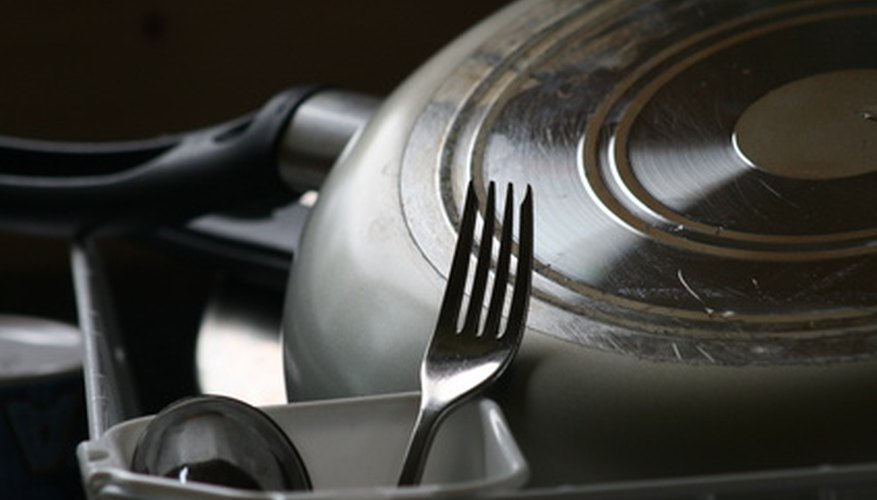Bosch home appliances are part of the Siemens manufacturing group, the third largest appliance manufacturer in the world. Their dishwashers come in a variety of styles and colours and feature such innovations as hidden controls and Energy Star certifications. After washing a load of dishes, these washers work by pumping the dirty water out through a drain hose and into your home's sewage system. Occasionally these drain hoses can crack or leak, in which case you'll want to change the drain hose on your Bosch dishwasher.
Shut down the power to the circuit that holds the dishwasher.
Remove the dishwasher from the support brackets. In the majority of Bosch models, this is done by opening the front door and then undoing the screws that hold the dishwasher to the underside of the countertop.
- Bosch home appliances are part of the Siemens manufacturing group, the third largest appliance manufacturer in the world.
- In the majority of Bosch models, this is done by opening the front door and then undoing the screws that hold the dishwasher to the underside of the countertop.
Pull the Bosch dishwasher out from underneath the cabinet and away from the wall. Be careful not to pull it out too far, as you might disconnect the water supply, the electricity or the drain hose.
Use the screwdriver to unscrew the compression clamp that holds the drain hose to the outlet on the Bosch. Pull the drain hose off the fitting.
Follow the drain hose with your hand until you find where it terminates, this could be at the kitchen sink, a garbage disposal or an air gap assembly. Unscrew the compression clamp at the end of the hose and pull it off the fitting.
- Pull the Bosch dishwasher out from underneath the cabinet and away from the wall.
- Unscrew the compression clamp at the end of the hose and pull it off the fitting.
Install the new drain hose by reversing the steps above. Start where the drain hose terminates and connect the other end on the outlet at the Bosch.
Push the dishwasher back to its original location. Restore power to the circuit. Run a test wash and check for leaks. Tighten the compression fittings, if needed. When you're satisfied with the washer's performance, secure it back in place with the support brackets.
WARNING
Always use caution when working with water and electricity.
